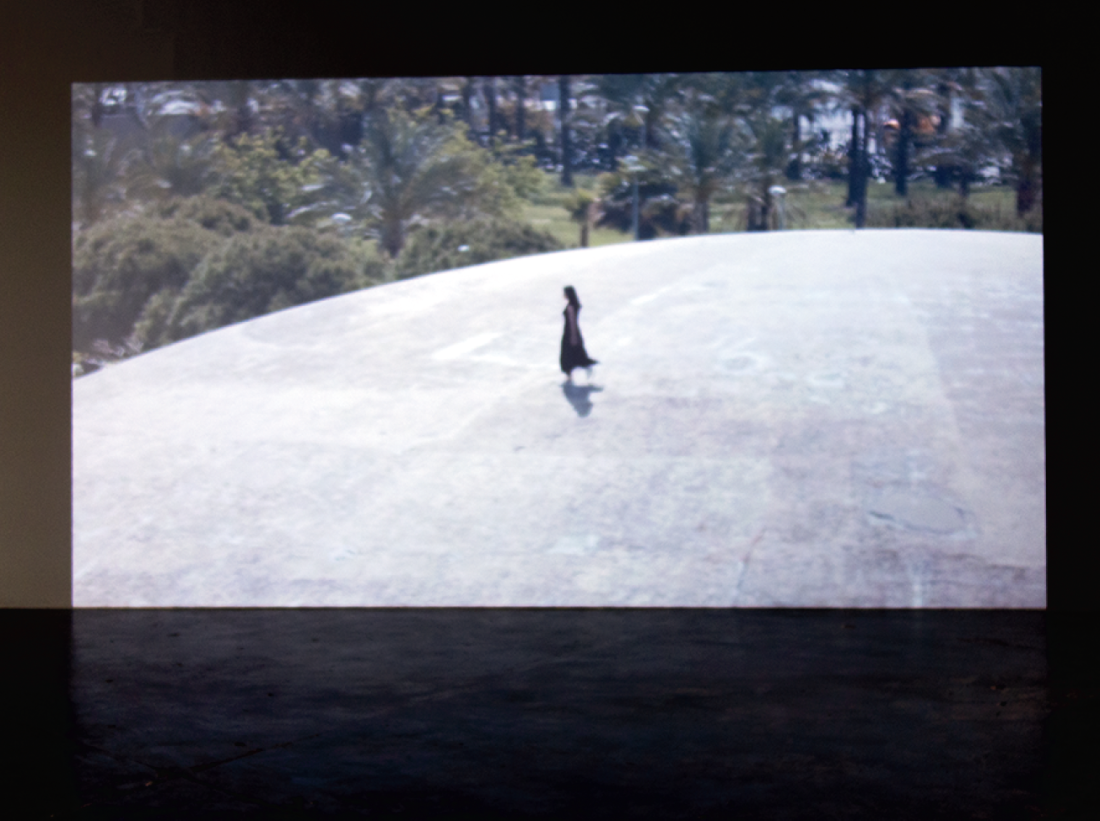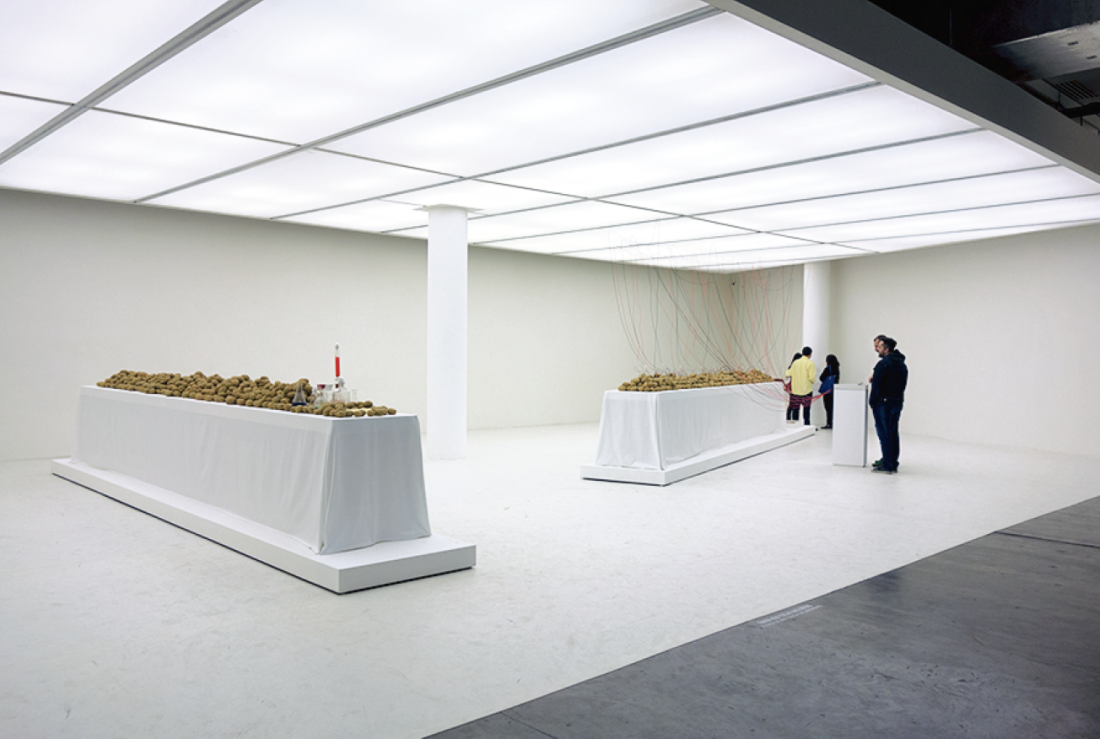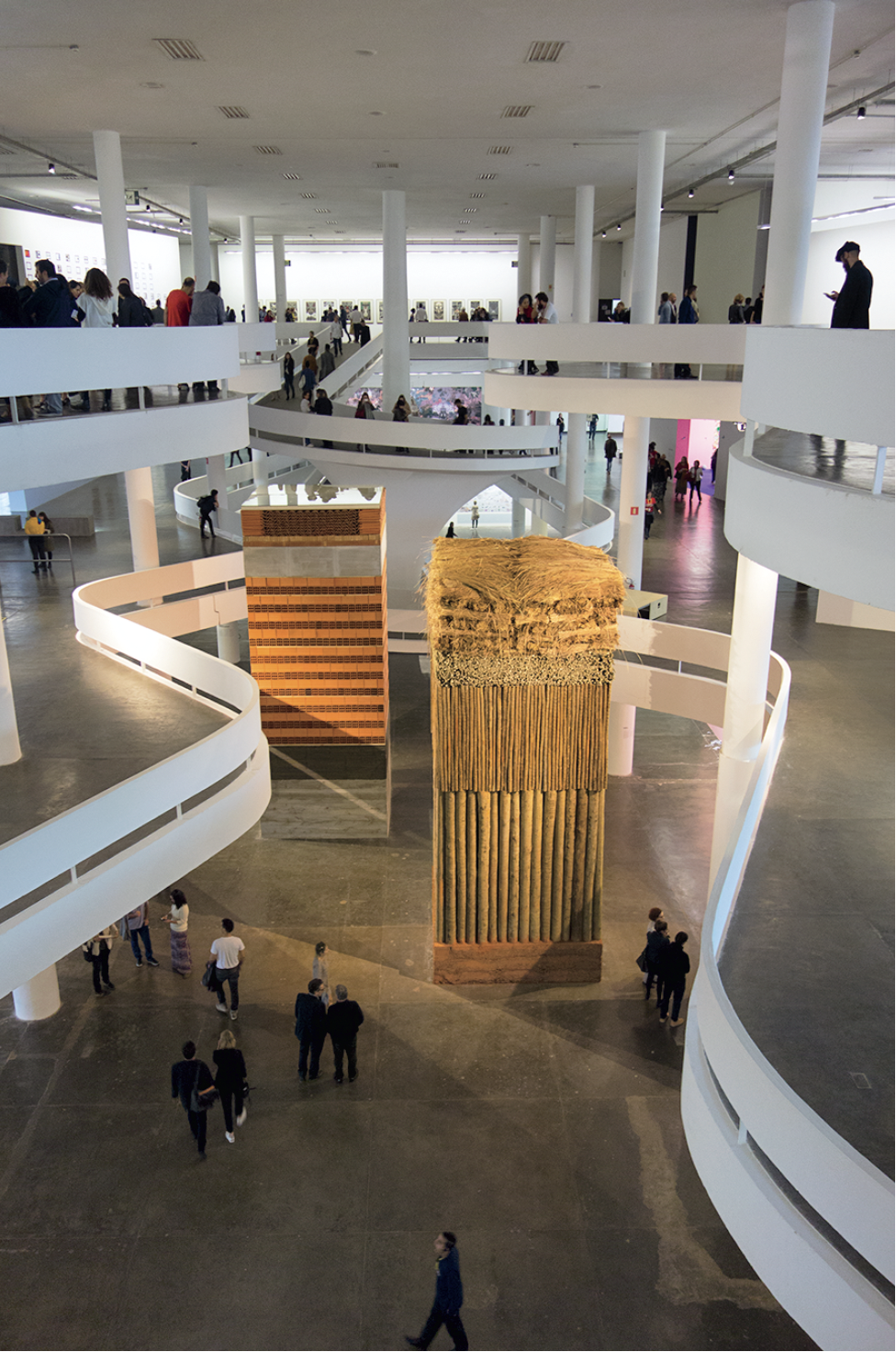“32nd Sāo Paulo Biennale, “Incerteza Viva”
Against a backdrop of global economic and political uncertainty the 32nd São Paulo Biennial opened in September, 2016. Protesters occupied the streets in Brazil, declaring their fierce opposition to the impeachment of Dilma Rousseff, the country’s left-leaning president. The protest spread inside the exhibition with artists and visitors calling for the resignation of her replacement, the former Vice President Michel Temer. In this context it was hard for any artwork in the Biennial to avoid being read as anything but political. As with past São Paulo Biennials, this exhibition critically and gently reflected art that mirrors important themes and maps questions about contemporary life: diversity, ecological urgencies, violence, work, decolonization, transformation, sexuality, mystical and spiritual universes and utopias.
The SP Biennial was initiated in 1951 and quickly grew into the second most important international exhibition of contemporary art after the Venice Biennale. Since 1957 it has been located in the Ciccillo Matarazzo Pavilion in Ibirapuera Park, built to commemorate the 4th centenary of São Paulo. It is a large, imposing building designed by Oscar Niemeyer, one of the 20th century’s most important architects. The set of buildings constructed in the park was the precursor of Brasilia, the modern capital of Brazil, inaugurated in 1961—a city artificially created, moving the political capital away from Rio de Janeiro to a more central location in the country.

Alia Farid, Ma’arad Trablous [The Exhibition of Tripoli], 2016, film still, directed by Alia Farid.
The building and the adjacent park have always influenced the direction of the Biennial and this time perhaps more obviously. Roberto Burle Marx, the Modernist landscape architect who worked closely with Niemeyer on many of his most important projects, designed the park itself. To many, Marx was Brazil’s first environmentalist. He worked with botanists to research the country’s rich array of plants, many of which he used in his landscape designs.
It’s hard to escape either the tropical Modernism of Burle Marx and Niemeyer or the metropolis of the city in any of São Paulo’s Biennials, and this one is no different. Many of the artists selected chose to address architecture and urbanism. Most of the artwork was commissioned specifically for this biennial; the most noticeable was a large piece in one of the most visible locations of the building. Brazilian artist Lais Myrrha built two towers in the building’s atrium; one is made from materials used in the Indigenous construction—mud, bamboo and straw—the other is constructed using typical Brazilian materials that would be found in an urban context—cement, steel, glass, pipes and brick. Entitled Double Standard, the two different methods of constructing a society is an eloquent reminder of notions of progress and destruction evident in the Modernist project.
Another artist whose work may be read as a critique of Niemeyer’s utopic vision is an artist from Kuwait, Alia Farid. In her video installation a figure quietly strolls through the ruins of what appears to be a familiar site. The video’s location is another of Niemeyer’s projects, this time located in Tripoli, Lebanon. Niemeyer started to construct a major public space in the city in 1963, but the building was halted in 1975 due to the Lebanese civil war; what remains is in ruins. Brazil is the home of the largest (by far) number of Lebanese diaspora in the world, and this clever work connects the countries on several levels, suggesting the defunct future.

Installation view, Víctor Grippo, Naturalizar al hombre, humanizar a la naturaleza, or Energía vegetal [Man Naturalization, Nature Humanization, or Vegetal Energy], 1977, mixed media, dimensions variable. Courtesy the estate of the artist and Alexander and Bonin, New York. © Leo Eloy / Fundação Bienal de São Paulo; and Analogía I (2ds. Version) [Analogy I (2nd Version)], 1970, mixed media, dimensions variable. © Leo Eloy / Fundação Bienal de São Paulo.
Neatly dividing one of the Biennial’s floors is a large installation by Jose Bento. It is a parquet floor made with pieces of Brazilian wood reclaimed from demolition sites. This type of hand-placed mosaic flooring is used in the houses and apartments of Brazil’s middle class, whose lives are now in the midst of economic uncertainty. As you walk across the floor, sections give slightly under your foot, creating a sense of instability. As you get used to it, it is hard to resist the buoyancy, and visitors started to use it as a trampoline, seemingly suggestive of the title of the exhibition, which asks us to embrace uncertainty.
Several historical artists whose work informed the various thematic threads in the show anchor the exhibition. The late Argentine artist Victor Grippo played a significant role in late 20th-century contemporary art in South America. His signature work, Analogy 1, 1970, was reconstructed for the third time in the Biennial’s history. The work is a long, Last- Supper-like table holding several kilos of potatoes. The tubers are linked together by electrical wires, generating a small but recordable current of electricity. Grippo felt the work was a metaphor for the transformative power of collective action. This work embodies much of what we see in the Biennial in this edition—critical thinking and collective action.
Ruth Ewan’s work entitled Back to the Fields was both a critique and celebration of nature. The work’s title references the French Revolutionary Calendar, which divided the year into months that were named for natural occurrences rather than religious figures. Each day was named after an agricultural tool, a plant or animal. Ewan’s work asks us to consider past radical projects that have been lost in the popular retelling of history.

Lais Myrrha, Dois pesos, duas medidas [Double Standard], 2016, concrete, brick, mortar, roof tile, glass, PVC tubes, conduits, wires, metal, wood, palm fiber and compacted soil, 800 x 300 x 300 cm. Commissioned by the Fundação Bienal de São Paulo for the 32nd Bienal. © Pedro Ivo Trasferetti / Fundação Bienal de São Paulo.
This utopian vision of how to solve many of the world’s ecological issues is also presented in the restaurant for the Biennial. Brazilian artist Jorge Menna Barreto has set up his version of growth and consumption on the mezzanine. The work is entitled Restoration and it developed through meetings the artist had with agricultural workers and farmers near the city. These workers supply the restaurant with food, while nearby, didactic material gives visitors information on the impact of food production on the environment.
One of the key aims of the Biennial has been to bring art to the people. Admission is always free and there is a dynamic program of educational events: lectures, performances, conferences and films. Educators, students and activists were all involved in the curatorial process, and the results are an example for all museums. Red-coated ‘mediators’ enthusiastically roam the exhibition facilitating visitor experiences and offering to the public educational morsels on ecology, cosmology, artists’ processes and oral histories. Youth is a focal point for the education program, and the Biennial works closely with the schools in Brazil and across South America, extending the reach of the exhibition.
Curator Jochen Volz and cocurators Gabi Ngcobo, Júlia Rebouças, Lars Bang Larsen, and Sofía Olascoaga posit the view that we must detach fear from uncertainty. Fear is a political tool used to extend power, to subjugate labour, to exploit resources and to fight change. Of the 81 artists in the exhibition over half are women, which is a first for the Biennial. There are no women in President Temer’s new cabinet. If ever Brazil needed the healing and political power of art, it is now. ❚
The 2016 São Paulo Biennial was exhibited in São Paulo, Brazil, from September 7 to December 11, 2016.
Jon Tupper is currently the Director of the Art Gallery of Greater Victoria.
Alexander Pilis is an architectural investigator, who lives and works as an artist in Toronto, Montreal and São Paulo. Pilis teaches at Concordia University in Montreal and he is represented by Galeria Virgilio in São Paulo, Brazil.

